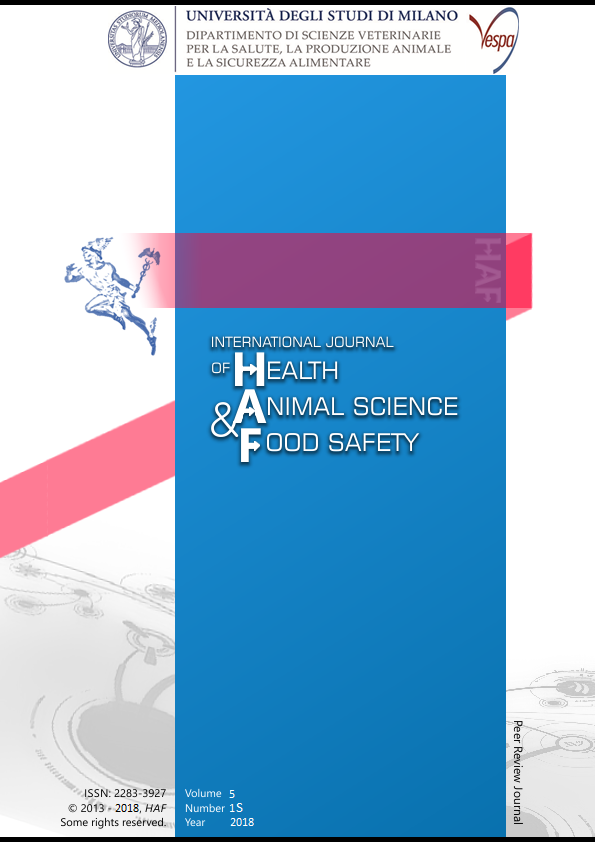Abstract
Animal production systems produce large quantities of manure, which is recognized as a significant source of heavy metals (HMs) (Hejna et al., 2018). Some HMs are essential nutrients and zinc oxide (ZnO) was often used at high doses to control the enteric disorders mainly in the swine post weaning phase (Rossi et al., 2013, 2014). The general increase of HMs content was registered in the livestock output with a negative impact on the environment. Preliminary data showed that swine manure was an important source of Zn, Cu, Mn and Se to the environment reflecting the HMs content in feeds (Hejna et al., 2017a). The aim of this study was to evaluate the ability of Typha latifolia (TL) and Thelypteris palustris (TP) to bioaccumulate trace elements, from water as a cost-effective plant-based approach of wastewater remediation in pig livestock.
The experimental design included four mesocosms (width: 4.0 m, length: 2.0 m, depth: 0.7 m; 695L of water, 210kg of soil): two controls, planted with TP (TPC) and TL (TLC) respectively and two treated, planted with TP (TPT) and TL (TLT) respectively. The treatment was represented by a mineral feed additive premix dissolved in TPT and TLT with the following final HMs concentration: Zn: 44.02mg/L; Cu: 8.63mg/L; Mn: 10.83mg/L; Se: 0.09mg/L. Such high concentrations, corresponding to polluted wastewater, would be sufficient to reach the potential saturation limit of the substrates in the short experimental period. At day 0 (T0), day 15 (T1) and day 45 (T2) samples of roots, leaves, stems, soil and water were collected, dried and principal chemical component were estimated according to the official method of Analysis of Association of Analytical Communities (AOAC). Samples were also mineralized by an ultravawe single reaction chamber and analyzed using inductively coupled plasma mass spectrometry (ICP-MS).
Obtained results showed that TL and TP tolerated high levels of Zn, Cu, Mn and Se with no visual toxicity signs or significant effects on growth during the entire experimental period. TP appeared more effective than TL at translocating elements from water to plant tissues. In particular, TPT showed a significant increase of Zn and Cu content in whole plants from T0 to T2 (p≤0.001). At T2 the mean zinc concentration was 409.26±342.33 mg/kg d.m. and 271.64±64.85 mg/kg d.m. in TPT and TLT plants respectively. In the plants of control mesocosms, differences between T0 and T2 were not observed. Results suggested that both plant species were able to reduce the available amount of metals from the contaminated wastewater, thus TL and TP plants may be candidates for the phytoremediation approach to control HMs output from the livestock wastewater.
Acknowledgements: supported by MIPAAF 2015.
Riferimenti bibliografici
Hejna M., Gottardo D., Baldi A., Dell’Orto V., Cheli F., Zaninelli M., Rossi L., 2018. Review: Nutritional ecology of heavy metals. Animal. 1-15.
Hejna M., Baldi A., Onelli E., Gottardo D., Pilu S.R., Dell’Orto V., Zaninelli M., Rossi L., 2017a. Evaluation of heavy metals in intensive animal production systems. Italian Journal of Animal Science vol.16:s1, 97.
Hejna M., Stroppa N., Moscatelli A., De Nisi D., Dell’Orto V., Pilu S.R., Baldi A., Rossi L., 2017b. Phytoremediation as an innovative approach to control heavy metals output from livestock. Italian Journal of Animal Science vol.16:s1, 128.
Rossi L., Dell'Orto V., Vagni S., Sala V., Reggi S., Baldi A., 2014. Protective effect of oral administration of transgenic tobacco seeds against verocytotoxic Escherichia coli strain in piglets. Veterinary Research Communications 38(1), 39–49.
Rossi L., Di Giancamillo A., Reggi S., Domeneghini C., Baldi A., Sala V., Dell'Orto V., Coddens A., Cox E., Fogher C., 2013. Expression of verocytotoxic Escherichia coli antigens in tobacco seeds and evaluation of gut immunity after oral administration in mouse model. Journal of Veterinary Sciences 14(3), 263–270.
This work is licensed under a CC BY-SA 4.0 international

